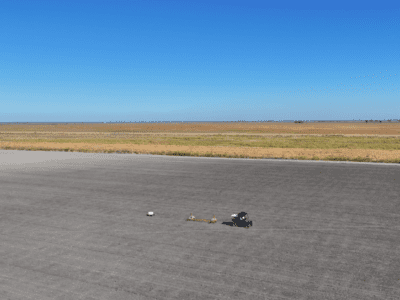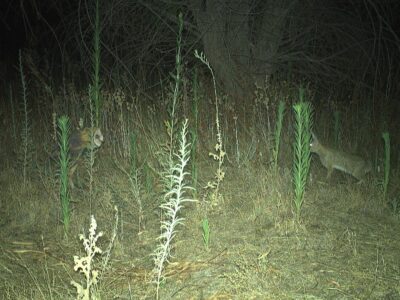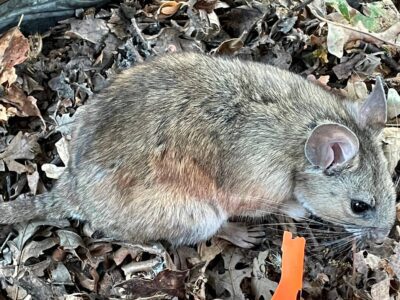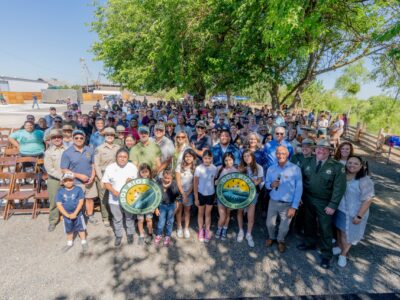BY JOHN HOLLAND
MAY 17, 2021 12:47 PM Out where the Tuolumne River joins the San Joaquin, an intriguing way of managing water is taking hold.
Dos Rios Ranch is nine years into its restoration, a $45 million-plus effort across nearly 2,400 acres. It seeks to enhance flood protection, wildlife habitat and water supplies in one grand vision.
Crews have reshaped former farm fields to mimic the floodplains that spread across much of the Central Valley in the time before dams and levees.
In the very wet 2017, these zones took on water that might otherwise have added to the flood threat for homes in Manteca. The water sat for three months as it seeped into the ground, recharging an aquifer tapped by farm and city wells.
The restoration also benefits salmon, which could help local irrigation districts fend off calls to greatly increase reservoir releases.
Newly spawned fish can feed in the shade of native trees that have topped 30 feet in some places a few years after planting. Hawks, rabbits, songbirds and many other creatures seem to like Dos Rios, too.
“The wildlife habitat in these places is just stunning,” said John Cain, director of conservation for River Partners, the nonprofit leading the project.
He spoke during a May 7 tour for a few top state officials, including Wade Crowfoot, natural resources secretary for Gov. Gavin Newsom. They and other attendees car-caravaned around the property, off Paradise Road about 10 miles southwest of Modesto.
Parts of the land remains in agriculture, but the transition could be done in about three years. The public cannot visit for now, but that could change when the property is turned over the U.S. Fish and Wildlife Service in perhaps five years
The agency operates the adjacent San Joaquin River National Wildlife Refuge, about 7,000 acres of floodplain and other habitat.
Many Sources Provide $46 Million
River Partners has carried out the effort with help from the Tuolumne River Trust and several federal, state and local agencies.
They have combined for about $31 million to buy the land and $15 million for restoration so far. River Partners is seeking at least $10 million more over the next few years.
It all started with the 2012 purchase of 1,602 acres from the Lyons family, where the floodplain work is close to done. Another 497 acres are a dairy farm just to the south, acquired in 2014. The final 285-acre piece is a farm just north of Grayson, purchased in 2015. These last two portions have not started restoration.
The Lyons land had produced feed for dairy and beef cattle, along with almonds, tomatoes and other crops. Despite levees and other measures, the land flooded six times between 1983 and 2007 with water from the Tuolumne and San Joaquin.
About 4,800 acre-feet of water spread across restored floodplains in 2017, one of the wettest years on record, and stayed there for three months. The above-average 2019 brought about 3,600 acre-feet over two months.
“When you’re not fighting the river … it actually creates a lot of benefits,” Cain said.
Tuolumne’s Long Journey Ends Here
The final three miles of the Tuolumne wind through Dos Rios, which also has five miles of the lower San Joaquin.
The Tuolumne arises in glaciers more than 13,000 feet above sea level and flows freely across most of Yosemite National Park. San Francisco diverts about an eighth of the volume at Hetch Hetchy Reservoir, just inside the park. The Modesto and Turlock irrigation districts take roughly half the watershed runoff at Don Pedro Reservoir.
Downstream of Don Pedro, the Tuolumne can run high in wet years, when demand is easy to meet for farms and cities. Dry years can bring the flow down to as low as 50 cubic feet per second, based on the current federal license for MID and TID.
Environmental and fishing groups have urged much higher releases than the districts propose in their pending license renewal. The critics hope for the same through the State Water Resources Control Board, a process also involving the lower Stanislaus, Merced and San Joaquin rivers.
The districts counter that these releases would take too much water from the farms at the core of the region’s economy. They prefer modest flow increases coupled with salmon habitat improvements – such as the work taking place at Dos Rios.
350,000-Plus Plants Rise from Muck
River Partners has planted more than 350,0000 native trees, shrubs and grasses so far. Willows, cottonwoods and ashes have started to stand tall over understory plants such as mugwort, blackberry and rye.
They are irrigated from the rivers for three years, then left to survive on subsurface water.
The trees cast shade each spring for salmon that had hatched upstream the previous autumn. The fish eat bugs that fall from the trees, part of a diet that prepares them for a few years in the Pacific Ocean.
Birdwatchers have counted more than 80 species at Dos Rios, including Swainson’s hawks from Argentina and other migrants and year-round denizens.
The place is home to riparian brush rabbits, which had been declining in the region, and the first deer spotted at Dos Rios in two decades.
“It’s bringing back habitat for the wildlife,” said Nicholas Reynoso, an assistant field manager for River Partners. “We give rabbits, hawks and everything a home.”
The Modesto Bee visited with his crew an hour before the main tour. The task that morning was planting milkweed, a favorite food of monarch butterflies, under a new initiative involving other areas.
About 10 people work full-time at Dos Rios for River Partners, which is based in Chico and has a branch office in Turlock. They get help at times from the Greater Valley Conservation Corps, which trains 18 to 25-year-olds for this kind of labor.
“They are learning about ag,” Director Nicholas Mueller said. “They are getting outdoors and learning about the environment.”
Huge State Surplus Could Help
Crowfoot is Newsom’s top official overseeing water, wildlife, forestry and related functions. He came with three assistant secretaries to see Dos Rios up close.
Crowfoot said such efforts could get a boost in funding thanks to the state’s $75 billion budget surplus. And the projects could align with fighting climate change, since floodplain trees absorb plenty of carbon from the air.
The secretary previously led the Water Foundation, a Sacramento-based nonprofit that has promoted floodplain restoration around the nation.
“Let the river do what it used to do,” is how he summed it up.
Only about 5% of the Central Valley’s natural floodplains remain thanks to dams and levees built since the 1850s. Dos Rios and similar projects will make only a modest difference, but the advocates think they’re worth it amid a changing climate.
River Partners figures that Dos Rios is conserving about 7,000 acre-feet of water a year – the difference between the former farm use and what the native plants need. The surplus can go toward the releases required of irrigation districts into the lower rivers.
“The more that we get of this, the more certain agriculture can be,” Crowfoot said.
The Lyons family continues to raise crops and cattle nearby at Mapes Ranch, in ways that have helped wildlife in other ways. Most notable is its help in the recovery of Aleutian geese, which feed in local farm fields during winter.
The Dos Rios tour ended with a socially distanced lunch with family member Bill Lyons Jr., a former secretary of food and agriculture for California.
“You had the opportunity to tour what the results are and what can be done up and down the river,” he said.
See the original article in The Modesto Bee.







